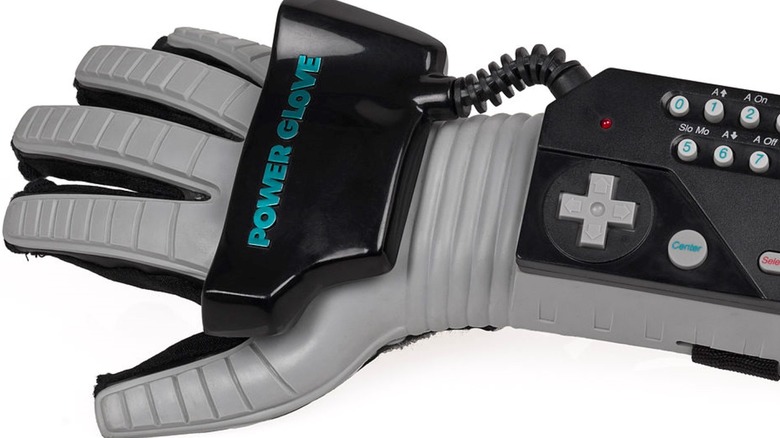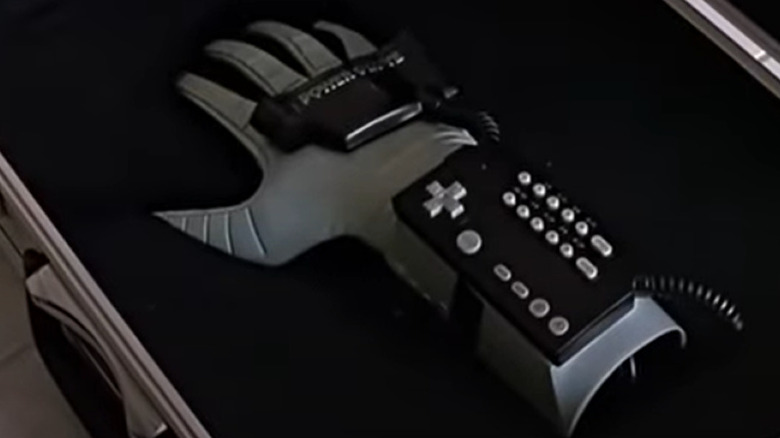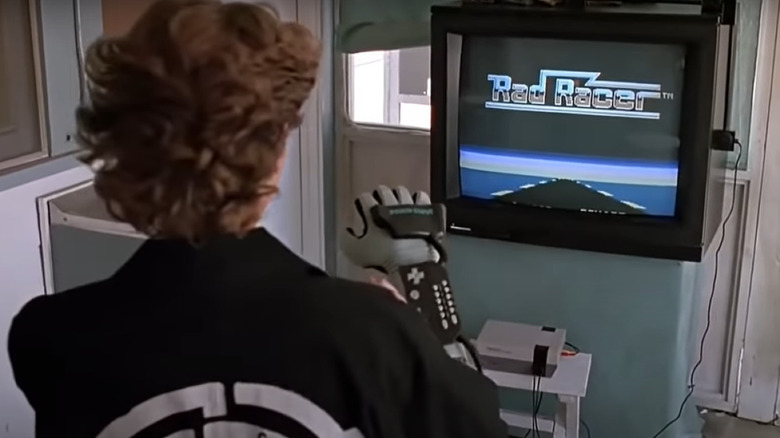The Real Reason Nintendo's Power Glove Was A Flop
In the ongoing console wars, Nintendo is known as a company that likes to experiment and innovate with its controllers. While the Xbox and PlayStation have seen relatively little change in controller design over time, Nintendo tends to switch things up with every iteration. Indeed, this pattern is so consistent that memes have been made about it.
What younger gamers may not know is that this flair for wild experiments goes back decades. Older fans, however, will likely remember the Power Glove that was released for the original Nintendo Entertainment System in 1989. While it wasn't the most insane controller ever made, it still proved to be a flop with fans.
Today, the Power Glove is remembered as one of Nintendo's biggest mistakes and is little more than a joke among gamers. Still, incorporating motion controls into video games was an innovative idea and arguably ahead of its time. The question is, why did this controller fail so miserably?
Power Glove developed by Mattel in a rush
A video by Gaming Historian lays out the details of the Power Gloves troubled production and release, offering a hint of why it ultimately performed so badly. While it was an exciting new idea and based on some impressive technology, there were just too many obstacles and missteps to make it work.
The Power Glove was based on a 1981 design by Thomas Zimmerman. A recent MIT graduate, Zimmerman designed a glove that could be used to create music through the movement of fingers. Throughout the '80s Zimmerman would patent and then pitch his design to various individuals and companies. Over time, the gloves design was improved and refined as Zimmerman teamed up with different collaborators and design teams. Eventually, the glove was brought to the attention of not Nintendo, but Mattel, in 1989.
While Mattel was mostly known for manufacturing toys like the Barbie doll, it had briefly dabbled in video games with its Intellivision console and executives saw potential for the glove as a game controller. Unfortunately, these executives were, perhaps, a bit too excited to see the glove released and asked that it be ready for Christmas of that year, giving the engineering team a mere five months to develop the Power Glove based on a design that was far too expensive to sell commercially.
Poor controls and a lack of games killed the Power Glove
Cutting costs and accelerating development meant dropping a lot of the high tech elements of the prototype and switching to cheaper, simpler alternatives. The use of fiber optics to detect finger movement was replaced with a less sensitive alternative along with other changes that made the glove less precise as a game controller.
Further, the speedy release meant only a single game with Power Glove controls built into it was available at launch. Only one game was ever designed from the beginning to be played exclusively with the Power Glove, and it wouldn't be released until the year after the glove came out.
The glove initially sold well (hitting almost a million sales per Next Generation magazine) and saw success based on hype surrounding its release and the film "The Wizard," which served as an extended commercial for the device. Still, the peripheral was ultimately a failure. As Jamie Logie noted on Medium, the Power Glove simply couldn't sustain its popularity through hype when it worked so poorly and had no games to justify buying.
While the glove ultimately failed, it still lives on today as a running joke and fuel for memes. Some fans have even found new uses for the device, using it to control drones and even bringing things full circle by using it to make music (per Engadget). The Power Glove may be long gone but it's certainly not forgotten.



